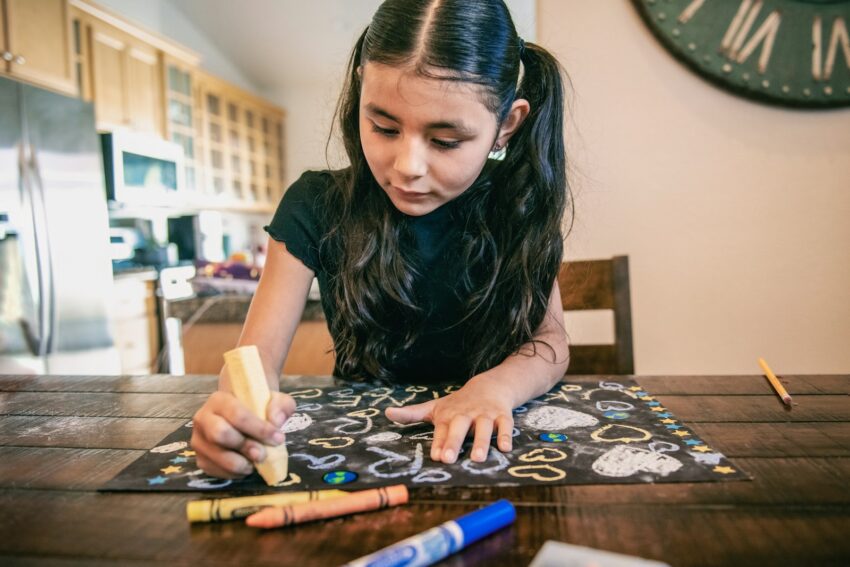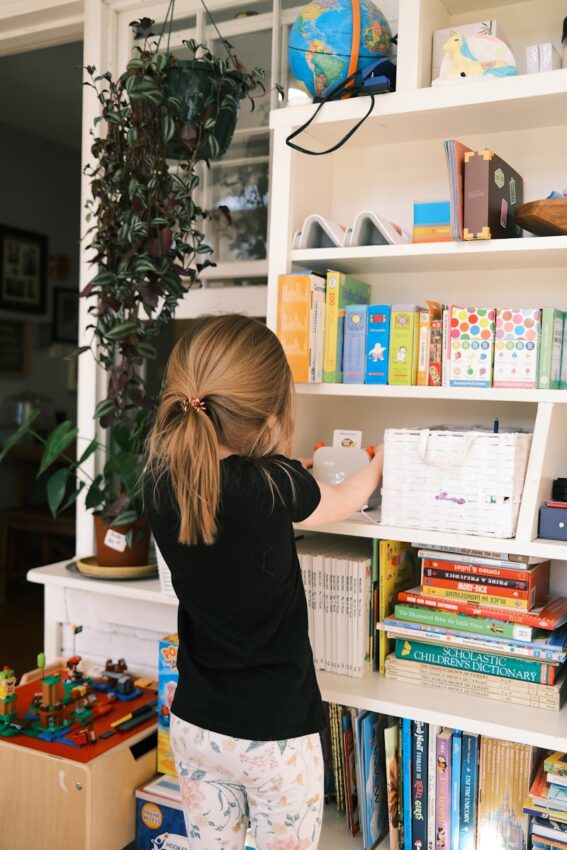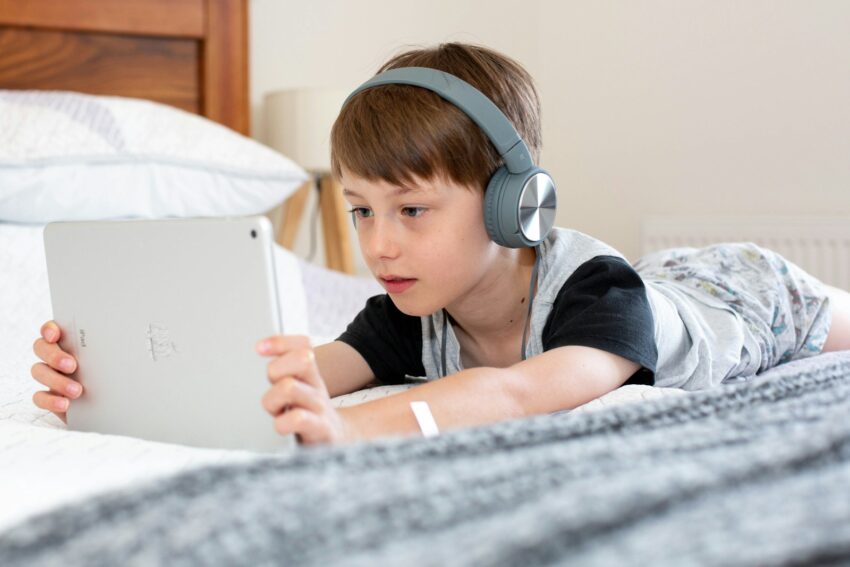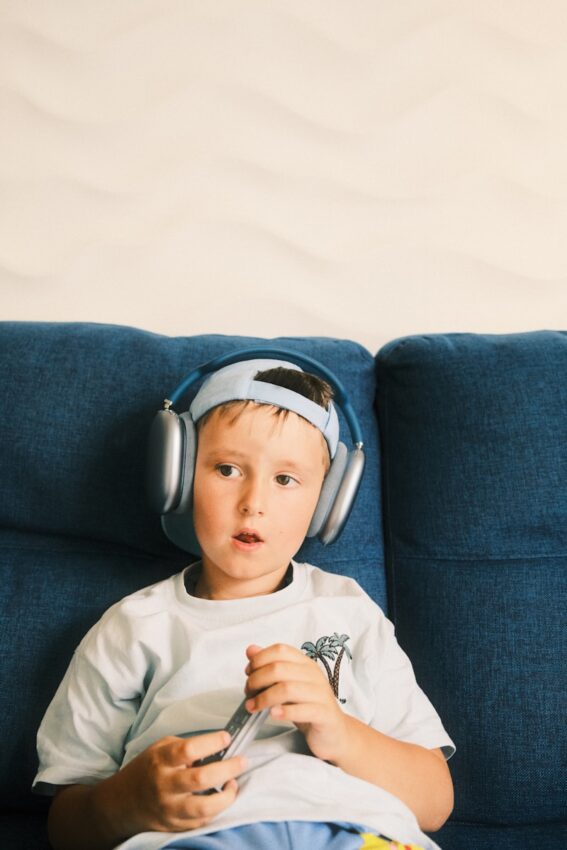As a homeschooling mom who cherishes teaching my children at home, I know how enriching our routine can be—and also how overwhelming it sometimes becomes. When the sensory input of lessons, screens, siblings, and household demands all collide, overstimulation can sneak in. Overstimulation isn’t just about kids—it affects moms too. Here’s how we can recognize it, overcome it, and find calm together.

What Is Overstimulation and Why It Matters in Homeschooling
Overstimulation happens when a child—or adult—receives more sensory input than they can process. This can lead to irritability, emotional meltdowns, zoning out, or restlessness. Experts point out that environmental triggers like too much noise, visual chaos, or unmet physical needs (like hunger or tiredness) make it worse (Parents.com).
Homeschool days can lack built-in breaks or transitions—so the pressure for constant engagement builds, especially for children sensitive to sensory input. This kind of chronic activation of stress—over days or weeks—can affect both children and parents emotionally and mentally (MDPI study).

Why Overstimulation Can Be Especially Tough during Homeschooling
While homeschooling brings flexibility, it also places a heavy load on caregivers. Studies show that during periods of mandated homeschooling (like during COVID), both parent and child mental health often worsened over time—unless proper support was available. School-provided resources like live online classes or learning packs offered some protection, while the absence of structure increased stress (MDPI research).
Interestingly, scientific reports found that parents who chose to homeschool experienced fewer mental health declines than those managing remote instruction, suggesting controlled homeschool environments can be protective when done mindfully (Scientific Reports 2025).

Benefits of Addressing Overstimulation in Homeschooling
- Improved emotional regulation: Recognizing triggers helps children—and moms—feel calmer and more focused.
- Better learning outcomes: When overstimulation is managed, kids engage more deeply and lessons flow more smoothly.
- Reduced stress for caregivers: Planning for sensory breaks and boundaries gives parents space to recharge.
- Healthier family dynamics: Less tension and meltdowns foster a peaceful, happy home learning atmosphere.

Practical Strategies to Overcome Overstimulation at Home
- Create calm spaces or “reset corners” where kids can step away for sensory breaks—a quiet nook with soft lighting and minimal distractions.
- Plan short breaks throughout the homeschool day: for example, quiet free play, outdoor time, or simple sensory activities. Routine prevents sensory overload before it builds (Capturing the Charmed Life offers realistic suggestions).
- Set screen-free zones or times during lessons and allow yourself structured planning periods without interruptions.
- Establish boundaries and communicate them to family and friends, so everyone respects your learning hours—and you can stay focused (Capturing the Charmed Life on overstimulation).
- Self-regulation practices for moms, such as mindful breathing, short walks, journaling, or listening to supportive podcasts, are key to staying grounded—not just for the children but for yourself too.
Where to Find Help and Resources Online
- Capturing the Charmed Life offers a podcast episode with occupational therapist Whitney Whitten, tailored to homeschooling moms dealing with sensory overwhelm. Topics include recognizing triggers and designing a sensory-smart homeschool day (episode details).
- The Homeschool Front shares self-care tips and practical strategies specifically for overstimulated homeschool moms seeking peace and balance (Homeschool Front strategies).
- Simple Homeschool offers insights about how smooth routines and checklists can reduce sensory burden for highly sensitive parents (simplehomeschool.net).

Why People Are Turning to These Approaches Instead of Traditional Stress Management
- These strategies are built for busy homeschool families—not clinical settings.
- They empower moms to care for their children and themselves using simple, affordable routines.
- They allow us to build supportive learning environments without major changes or external intervention.
Putting It into Practice: My DIY Approach at Home
- I observe when my child starts showing signs—ear rubbing, zoning out, irritability—and gently guide them to a calm-down corner.
- We’ve created a flexible schedule with sensory breaks—like outdoor recess and quiet drawing—so lessons never feel overwhelming.
- When I begin to feel “touched out” or emotionally drained by midday, I take five minutes for mindful breathing or a cup of tea away from screens.
- We communicate our daily expectations to grandparents or friends, ensuring interruptions happen less often.
- I share tools like reset corners and sensory breaks with our homeschool co-op, helping other moms set up supportive learning environments too.
Final Thoughts
Overstimulation is a challenge many homeschooling families face, but with awareness and intention, it’s entirely manageable. Understanding sensory triggers, creating boundaries, and prioritizing self-care aren’t luxuries—they’re necessities for peaceful, joyful learning at home.
If you’d like help mapping out a sensory-smart homeschool day, building a calm-down space, or choosing routines that reduce overwhelm, I’d be happy to share more real-life strategies from our homeschool experience.

Here are some Recent News Stories About Homeschooling and Overstimulation
A recent report from CT Insider highlights how Connecticut officials are urging stricter homeschooling regulations after a high-profile case involving a man who was kept captive for decades and later withdrawn to be homeschooled. The report suggests increased oversight to protect vulnerable children.
In the UK, The Guardian reported on a judge’s warning about the potential dangers of automatic homeschooling rights following the Sara Sharif case, which led to calls for registration and safeguarding reforms.
According to Fox News, Illinois families recently protested proposed legislation that would expand state oversight of homeschooling. The bill, which critics say constitutes government overreach, passed a key committee vote in early 2025.
Helpful Products on Amazon and Online to Reduce Overstimulation
- The Fine Motor Sensory Play Tool Kit from Playful Little Minds includes scoops, spoons, and pincer tongs that are perfect for sensory bins. These hands-on tools help children focus, calm down, and improve fine motor skills during breaks.
- Express-Your-Feelings Sensory Bottles by Sensory Tool House are colorfully designed bottles labeled with emotions like “Calm” and “Overwhelmed.” They offer visual sensory flow to help young kids recognize and regulate their emotions.
- Noise-canceling headphones for kids on Amazon can be a game-changer for children easily overwhelmed by background noise during lessons or co-op days.
- Weighted lap pads offer soothing pressure that helps kids stay focused during reading or quiet seatwork time.
Online Resources for Moms Managing Overstimulation
- Capturing the Charmed Life shares a thoughtful podcast episode featuring occupational therapist Whitney Whitten. She offers sensory-friendly ideas for homeschooling moms to reset their homes and minds.
- The Homeschool Front offers a resource-packed post specifically for overstimulated homeschool moms, including practical self-care ideas and schedule tweaks to avoid burnout.
- Simple Homeschool writes about parenting and homeschooling as a highly sensitive person. Their checklists and emotional tips are incredibly helpful when sensory input becomes overwhelming.
- Mental Health America outlines coping strategies for stressed parents managing homeschooling, from simplifying routines to using community support.
These stories, tools, and resources are perfect for any homeschool parent navigating the noisy, joyful, and sometimes overwhelming rhythm of daily learning at home. For our family, even adding just one sensory product or adjusting one routine made a noticeable difference in creating a calmer, more enjoyable homeschool experience. Let me know if you’d like help planning a sensory-smart homeschool day—I’d be happy to share more ideas!
